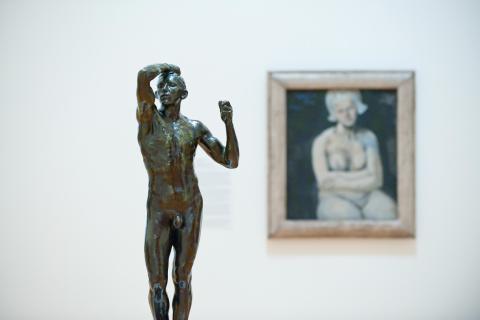Meet La Belle Hollandaise
Pablo Picasso is renowned for his versatility, imagination and technical brilliance. During his long career he developed many different styles and produced works across the media of painting, sculpture, printmaking and ceramics, as well as theatre costume and set design.
Picasso painted La Belle Hollandaise (‘the beautiful Dutch woman’) in mid-1905, in the little town of Schoorl Holland. Picasso, a young and impoverished artist at the time, could not have afforded this trip without the support of his friends and an invitation from Tom Schilperoort, a young Dutch journalist living in Paris
In Holland, Picasso produced a number of landscape and figure drawings as well as three paintings, the most important being La Belle Hollandaise. The only other extant painting from this period is in the collection of Musee National d’Art Moderne, Centre George Pompidou, Paris, with the third remaining unlocated. The works were painted on cardboard with the result that they are now particularly fragile. La Belle Hollandaise has been mounted on a wooden panel to stabilise and preserve the painting.

Work installed in QAG's Gallery 2 (l–r): Auguste Rodin’s L’Age d’airain (The Bronze age) 1876–77, cast 1955 and Picasso’s La Belle Hollandaise 1905 / © Succession Picasso/Copyright Agency, October 2010 / Photograph: R Fulton, QAGOMA
At a distance, the texture of La Belle Hollandaise gives the impression of an old fresco. A closer look, however, reveals that the artist has used his materials to build up the surface of the work almost in the manner of a relief. The volumetric treatment and statuesque quality of the figure in La Belle Hollandaise foreshadows the artist's cubist developments, and prefigures his classical nudes of the 1920s. The archaic serenity and gentle mood of La Belle Hollandaise, however, retains the character of the artist’s ‘rose’ period.

La Belle Hollandaise 1905
- PICASSO, Pablo - Creator


